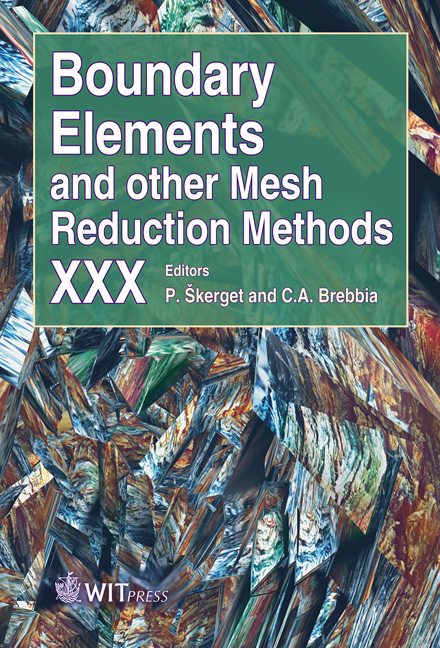On The Use Of Integrated RBFs In Galerkin Approximation For Elliptic Problems
Price
Free (open access)
Transaction
Volume
47
Pages
10
Page Range
169 - 178
Published
2008
Size
319 kb
Paper DOI
10.2495/BE080171
Copyright
WIT Press
Author(s)
N. Mai-Duy & T. Tran-Cong
Abstract
This paper presents a new radial-basis-function (RBF) technique for solving elliptic differential equations (DEs). Integrated RBF networks (IRBFN) are constructed to satisfy (a) the boundary conditions in a local sense using the point-collocation formulation, and (b) the DE in a global sense using the Galerkin formulation. Several numerical examples are presented to demonstrate the attractiveness of the present implementation. Keywords: integrated RBFs, Galerkin formulation,Neumann boundary conditions, multiple boundary conditions, domain decomposition. 1 Introduction Many discretisation techniques can be viewed as variants of the method of weighted residuals that can be stated in three well-known formulations, namely the strong, weak and inverse statements [1]. By means of weighting functions in a statement, the residuals for the DE and boundary conditions are made small in some senses. Two popular ways used are (i) the point-collocation approach, where the residuals are zero at certain points and (ii) the Galerkin-type approach, in which the residuals are zero in the mean. Each approach has some advantages in certain areas of application. The former is cost-effective as no integrations are required, while the latter has a smoothing capability owing to its integral nature. RBF collocation methods are considered as a powerful tool for the interpolation of scattered data as well as for the solution of differential problems [2]. The methods are capable of approximating arbitrarily-well continuous functions. A number of RBFs such as multiquadric and Gaussian functions have spectral approximation power. However, the condition number of the RBF interpolation matrix also grows
Keywords
integrated RBFs, Galerkin formulation,Neumann boundary conditions, multiple boundary conditions, domain decomposition.





